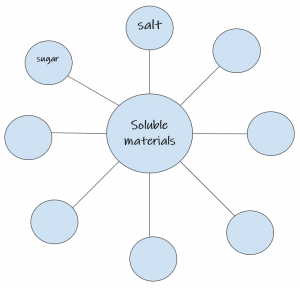We Care About Your Privacy
By clicking “Accept all”, you agree to the storing of cookies on your device to enhance site navigation, analyze site usage, and assist in our marketing efforts. View our Privacy Policy.
Our EAL learners are by no means a homogeneous group of learners and their needs in our classroom will vary to a considerable extent. As teachers may find it challenging at times to successfully cater to different EAL needs in class, developing a deeper understanding of those needs can help us address them more effectively through a number of tips and strategies.
It is very common for EAL learners who are new to English to be reluctant to talk in class, as they are going through a so-called ‘silent period’ during which they are absorbing the new language. If we expect this ‘silent period’ as a natural part of learning, then we can give our learners the time they need to process the new language. Also, whilst we are not forcing the child to respond, we can pair them up with another child who is speaking their language, or who is a good language model to them (‘buddy system’).
We can then gradually provide carefully planned opportunities for them to talk to an adult first, progressing to small groups then finally in front of the class. For instance, if our EAL learner is in a science lesson on matter and changing states, we can start building the learner’s vocabulary of this particular topic area by showing them images and modelling simple language for them, such as “Salt is a solid”, “Water is a liquid” or asking them simple questions, such as “What can you see here?”, “Is this a liquid?”. We can then plan for them to contribute to a small group experiment, encouraging them to use longer chunks of language; “Salt dissolves in the water because it is soluble”. Finally, when our learner starts feeling more confident with the new language, we can invite and encourage them to present the findings of their group experiment to the whole class. By monitoring the amount of learner talk expected of and planned for our learners, and by gradually exposing them to a wider audience, we give them the time that they need to develop their confidence in English.
EAL learners (especially new arrivals) bring their own cultural backgrounds in class but they also need to feel that they belong to the new classroom and school environment. In response to this need, as teachers we can create opportunities to show our learners that we value their first language, either by creating bilingual displays/resources (see example of a bilingual resource below) or by simply learning to greet them in their home language in the morning. This will create an inclusive learning environment for EAL learners, which will ultimately help them to thrive in class. You might also find that getting to know your learners better makes your planning easier, and the learning more interesting and relatable.
Planning for a wealth of collaborative activities in your class gives the EAL learner the opportunity to learn the language, which is modelled by peers in a meaningful situation with a particular outcome at the end of the activity. Whether it is group work or paired activities (discussion/reading/games), collaboration can have a huge impact on your EAL learners’ progress. Below is an example of a template to help you monitor the range of collaborative activities you plan for your EAL learners, as well as your learners’ level of engagement with the activity and the outcome of their learning. The template is also available for you to download below this article.

Timelines, Venn diagrams, flow charts, graphic organisers and mind maps (to name a few), not only support comprehension but also consolidation of new knowledge and memory. Plan for visual support to be an integral part of your lesson (see example of a mind map on soluble materials below), and ensure that recycling of lesson content happens regularly through repeated exposure and practice of sentence patterns or short texts. You can also download the mind map (see downloadable templates attached to this article).

The importance of offering EAL learners a predictable environment for which they feel prepared can increase their confidence, their attitude to learning and their progress. A key way of achieving this is through pre-teaching vocabulary and language patterns before the learning happens in class. Below is an example of a template for pre-teaching vocabulary supported by images, contextualised examples of the new vocabulary and translation into first language. To download this template, see the downloadable templates attached to this article.

As interference from the first language affects the way EAL learners express themselves and form their sentences in English, planning for opportunities to work on word order (see example of word order task below) will support their understanding of the structures of English, hence their accuracy in English will increase.

Reading increases vocabulary and familiarity with sentence patterns so therefore English language proficiency as a whole - see here an article about the importance of literature. By enriching their reading options through exposure to a variety of text types in class and out of class, and by checking for comprehension through questions on the content of the text (e.g. “What do you think will happen next?”, “How is the character feeling now?”), we lay the foundation for a competent reader who can successfully read for meaning. Reading bilingual books with EAL learners is also an option you can consider depending on the age, level and interests of your learners.
References:
Ellis, R. (2015). Understanding Second Language Acquisition. Oxford: Oxford University Press.
Gibbons, P. (2014). Scaffolding language, Scaffolding Learning: Teaching English Language Learners in the Mainstream Classroom. Portsmouth. Heinemann.
Booklets & Websites:
DfES (2015) Aiming High: Meeting the needs of newly arrived learners of English as an additional language (EAL) – a booklet to support schools who may be working with newly arrived isolated learners of English as an additional language
Milton Keynes Ethnic Minority Achievement Support Service (2004) Supporting Pupils with English as an Additional Language
NASSEA, The Northern Association of Support Services for Equality and Achievement (2015) EAL Assessment Framework
With EAL learners making up a diverse group with varying English proficiency levels and needs, differentiating class content for EAL learners can be challenging and time-consuming for teachers. However, utilising Artificial Intelligence tools as a time-saving resource for EAL planning can help us adopt more tailored approaches to teaching in almost no time. Let’s explore some of the ways in which AI can help us save time on a busy school day.
AI technology can offer adult learners of English or multilingual families a supportive, fun and engaging environment in which to learn and practise their English. Schools can play an instrumental role in guiding those families through this process and therefore home-school collaboration is always encouraged. Let’s look at four different ideas for school staff to encourage their multilingual families to engage in an enjoyable language learning experience through AI.
As teachers, we recognise that meaningful home-school communication is essential for establishing school practices and instilling positive life values that will guide our learners throughout their lives.